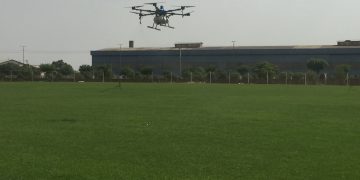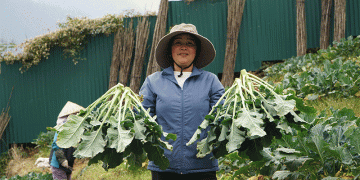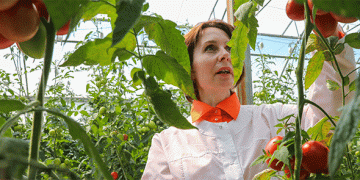With the population of the world estimated to reach 9.9 billion in 2050, focus has been drawn to question how this huge number of people on earth would survive considering the high prevalence of severe food insecurity in the world. According to statistics by FAO, the percentage of food insecurity in 2020 was 11.9%, and the number of severely food insecure people in the same year was 927.6 million. There is also the issue of climate change which is exacerbating world crop production and food sustainability.
To salvage the situation and save the world from imminent hunger, there is a need to prioritize precision agriculture. Precision agriculture has to do with the use of modern information technologies to ensure the crops and soil get the exact amount of nutrients (be it water, fertilizer) needed to amplify yield, profitability, and sustainability.

One of the modern technologies championing the drive for precision agriculture is the Unmanned Aerial Vehicles — drones. Unfortunately, only a meager number of farmers and agronomists make use of this technology to fast drive expected outcomes in their agribusinesses
In this article, I will be highlighting the important use of drones in agriculture and the need to employ them on farms for more yield, profitability, and sustainability.
What are drones?
Drones are unmanned aerial vehicles which have the ability to fly using Global Positioning System (GPS) and gather information about its focused location using inbuilt Geographic Information System (GIS). Drones are powerful technologies useful for surveillance, observation, collection of data, and the taking of pictures of a targeted location, with the help of its inbuilt camera and onboard sensors.
Drones are used by different organizations and enterprises for surveillance and security. In other industries like insurance, agriculture and construction, drones serve a greater responsibility of saving time, cost, and energy. With its global market estimated to rise to $43.4 billion by 2025, drones are rapidly becoming an important need of several industries.
While drone technology is still struggling to make it into the agriculture mainstream, there is an encouraging, progressive adoption of the technology in farms nowadays. Also, a recent release by MarketWatch predicts the global agricultural market of drones to reach $10.5 billion by 2028. This prediction validates the significance of drones in the agriculture sector.
Effect of drones in agriculture
Drones are an essential apparatus in agriculture. The technology helps farmers and agronomists observe, collect quality data and information about the growth of crops. It also helps carryout important tasks on farms which could have cost farmers their resources. Drones save time. They can access the terrain of a farm which could be difficult to reach on foot and gather data on crops health. Drones are also useful on farms to control the effect of natural disasters like floods.
Most importantly, the ultimate goal of drones in farms is to aid precision agriculture, and that is what they do in agriculture.
How drones help in precision agriculture
In order to save the world from imminent hunger, many agricultural firms are agitating for precision agriculture. One of the popular firms leading this race is Microsoft with its Azure FarmBeasts initiative. This software helps farmers process data collected on fields using artificial intelligence (AI) or Machine Learning (ML) models. It can also be mounted on drones (SenseFly) to take images and observe a farm’s health, visualize the condition of the soil, provide farmers with solutions and so on.
Drones participation for precision agriculture cut across man-enabling tasks and others which cannot be carried out by humans. They can be used to execute tasks like planting of seeds, observation of crop health, crop irrigation, crop spraying (prevention against diseases). They are also helpful in prescriptions of fertilizer and detection of crop diseases.
Crop planting/seeding:
Drones are confirmed to be more effective than humans during crop plantation. A drone has the ability to seed 10x faster than any human planter, and can cover large acres of land executing this task within a short period of time. In Africa, an agrotech company, aeroseed, has also planned on planting 100,000 trees per day in the continent using only two UAVs operators. This is to show how effective and fast drones are in seed planting.
Crop spraying:
Drones have the capacity to spray crops accurately and efficiently. The spraying of fertilizer, pesticide, herbicide, fungicide, and desiccant substances on crops can be done by drones more effectively than humans and even machines like tractors.
They can spray evenly and discreetly without much observation from farmers. This saves agronomists the cost of subscribing to manpowered spraying. This method also prevents the health of workers from being endangered.
Survey/observation
With more precision than man, drones can collect reports about the health and development of crops on a field. They are very good for surveillance. Drones help to take aerial views of a field, which a farmer can use to observe the growth of crops and note areas in need of proper irrigation to produce more yields.
There are many more services drones render in farms to aid precision agriculture. This however depends on the type of drones a farmer decides to use on his/her field.
Types of Drones
There are two major types of drones good for agriculture. They are Rotary drones and Fixed-wing drones. Rotary drones are known to be the best UAVs for taking high quality images at a close range.
Fixed-wing drones, on the other hand, are good at mapping a large area of land in a short period of time, due to its high cruising speed. Fixed-wing drones can also withstand windblow and function well under terrible climatic conditions.
Conclusion
Precision agriculture is still the major focus of many agricultural industries in the world. Tons of farms are now incorporating drone technology in their agricultural activities in order to save cost, make more yields and profits.
In 2020, FAO statistics confirmed that over 281 million people in Africa were undernourished in the continent. This is because of the insufficient number of farmers involved in precision agriculture.
While precision agriculture (& use of drones in agriculture) is still an alien thing in Africa, there are agric-enterprises and startups working to bring about this practice in the continent. There is Zenvus (Nigeria), Technoserve (Uganda), i-Drone Service Limited (Zambia), Aeroseed (Nigeria), and many more.































